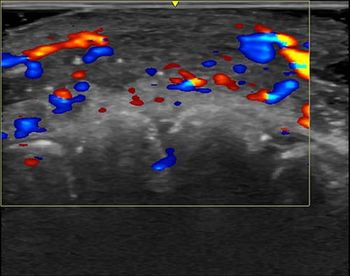
Low-cost retrofit table enters peripheral MR angiography market
MR providers who want to do peripheral run-offs now have an alternative to the sophisticated and costly solutions offered by OEMs.A pair of entrepreneurs, a radiologist and a physicist at William Beaumont Hospital in Royal Oak, MI, are hawking a patient
MR providers who want to do peripheral run-offs now have an alternative to the sophisticated and costly solutions offered by OEMs.
A pair of entrepreneurs, a radiologist and a physicist at William Beaumont Hospital in Royal Oak, MI, are hawking a patient table they say can be retrofitted to MRI scanners manufactured by major vendors, including GE, Siemens, and Marconi.
The table is mounted on top of the one built into the scanner. Rather than operating automatically and advancing under software commandas do OEM-manufactured stepping tablesthe retrofit table is manually advanced by the technologist.
"The idea was to develop a cost-effective alternative to what industry has come up with," said Anil Shetty, Ph.D., chief of MR physics at Beaumont. "This mechanical one is less expensive and achieves the same result as an automatic system."
Priced at about $50,000, the Stepping Kinematic Imaging Platform (SKIP) compares favorably with ones offered by OEMs, which cost end users between $100,000 and $250,000, Shetty said.
(GE executives who were asked to confirm the cost of upgrading an MRI scanner with one of their own stepping tables refused, stating only that the cost depends on the system being upgraded.)
The lower cost of the retrofit is achieved through the simplicity of the system. Spring-loaded plungers are set at increments of 30, 40, and 48 cm. A 15-second pulse sequence repeats three or four times. Five-second pauses between each sequence give the technologist enough time to move the patient from one position to the next, thereby following the bolus of MR contrast down the abdominal aorta to vasculature in the toes in a single injection.
"When the machine stops making sound, the operator knows to move the patient to the next station," Shetty said.
Mechanical operation takes the place of motors and gears, software to step the table, and specialized coils, Shetty said. This keeps the cost of the system down. The patented invention was also relatively easy to get through FDA clearance, which was achieved late last year.
The first SKIP table began operating at Beaumont in December 1999. Shetty and his partner, Kostaki Bis, chief of MR research at the hospital, placed their first system outside Beaumont last month. Their company, Magnetic Moments, has since delivered three other SKIPs. These early customers, they hope, will serve as reference sites for interested customers who want to see the product in operation.
Shetty and Bis decided to sell the product directly to end users after receiving little interest from OEMs.
"After we got our patent and 510(k) (clearance from the FDA), we approached GE and Siemens," Shetty said. "We got the impression that they liked the idea but weren't interested, because they were pushing their own ideas."
Newsletter
Stay at the forefront of radiology with the Diagnostic Imaging newsletter, delivering the latest news, clinical insights, and imaging advancements for today’s radiologists.




























